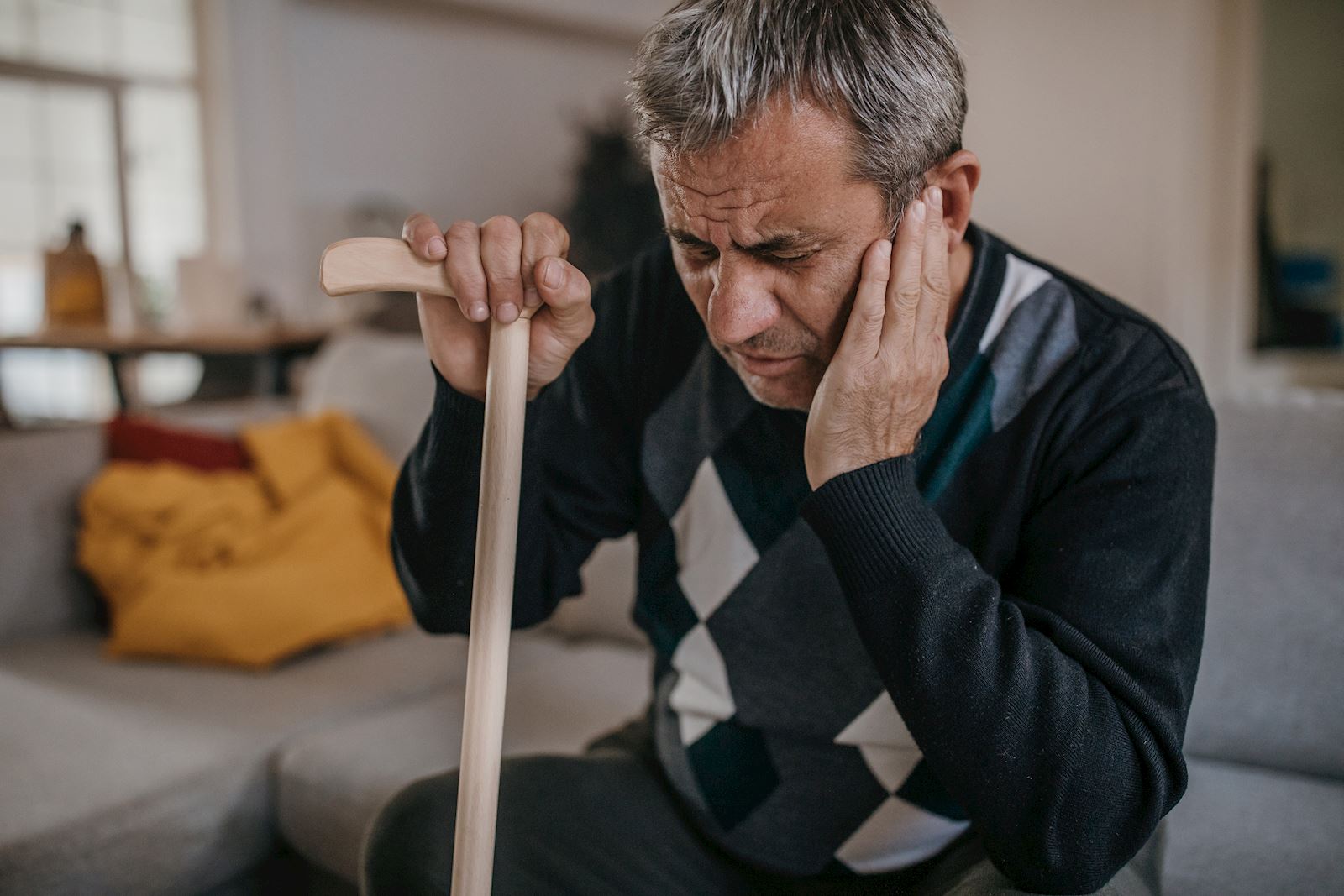Finding relief for ear pain starts with finding the source of the problem. Likely elsewhere than your ear.
Posted
by Featured Provider Danielle Liudahl on Tuesday, September 6, 2022

When you have an earache, you immediately think of one thing.
Ear infection.
You’re conditioned to. As a kid — or a parent of kids — you’re quite familiar with an otoscope and the bright pink liquid that typically follows.
As an adult, it’s not so simple.
Ear infections are less common in adults.
They still happen. About 20% of all ear infections occur in adults. They’re just not anywhere near as common as ear infections in kids.
“For children with ear pain, the likelihood of it being an infection is higher,” says Danielle Liudahl, an Ear, Nose & Throat doctor in West Des Moines. “For adults, ear infections and swimmer’s ear are still primary sources of ear-related ear pain. Even if it is just an ear infection, we don’t want to neglect that if it’s not getting better.”
While you can certainly suffer from an infection to your inner, middle or outer ear, it’s more likely something else altogether. You may think this only happens to little kids, but you could have something lodged in your ear. Or a buildup of earwax that becomes impacted, either on its own or from attempts to clean your ears with cotton swabs.
“There are many other causes than just recurrent upper respiratory tract infections leading to otitis media. So the range of what it could be is much broader,” Dr. Liudahl says. “The ear is unique in that there are a lot of nerves coming in from different areas. It could be one of many causes, some related to the ear and some not.”
Ear pressure, aches and pains come from many places.
An earache is like a headache or stomach ache — a general term that covers a wide variety of feelings. You may feel pressure or that your ear is “full.” It can feel achy or like something’s in there. You might have more serious pain inside, outside or behind your ear.
Each of those can mean something different.
“That’s the amazingly complex thing about it. It can be other things even though it feels like ear pain,” Dr. Liudahl says.
A lot of times, the pain doesn’t originate from the ear — it’s referred pain. It can feel like it’s in your ear but it actually comes from a headache, migraine, sore throat, tonsillitis, allergies, dental issue, temporomandibular joint dysfunction or acid reflux.
“There’s such a range. It could be something as benign as a headache to something as severe as pain of the oropharynx,” says Dr. Liudahl. “We don’t want to miss something bad. That’s why clinical exams are important.”
Most earaches actually get better on their own in two or three days. During that time, you can manage the pain with ibuprofen or a warm compress. Be wary of other home remedies for earache relief. As the saying goes, “Never put anything smaller than your elbow into your ear.”
And if your ear pain comes along with other ear-related symptoms, it could be more concerning:
- Hearing loss – Muffled hearing or “clogged” ears can accompany a cold or congestion. If you’re otherwise healthy or cold symptoms have improved, any changes to your hearing should be checked for hearing loss.
- Worsening ear pain – Earaches can last much longer than a few days. If the pain is getting worse, that’s a concern, Dr. Liudahl says.
- Visible drainage – Sometimes your ears feel wet. That can be something as simple as your ears producing more wax. When you have visible drainage to go along with the wet feeling, there’s something else going on.
Know where to go for your ear pain.
When you have an ear problem, your instinct is to see an ear expert. For severe, worsening pain, visible drainage and potential hearing loss, an ENT should be your first choice.
In other cases, it’s not so clear. Your average ear infection is best handled with a quick visit to Primary Care or Urgent Care. For other issues that cause ear pain, your primary care provider can help you navigate your symptoms and decide whether it’s appropriate to see an ear specialist.
When your earache warrants a visit to an Ear, Nose & Throat clinic, you can expect a comprehensive exam since these doctors understand three areas that often have overlapping symptoms.
“There’s a broad range of causes but we have a lot of options,” Dr. Liudahl says. “We’re used to exploring all these things in detail, especially if over-the-counter medicines or basic treatments have failed.”
“We have different tools like an otoscope, flexible laryngoscopy, audiometric testing, hearing testing and pressure testing to figure out the issue,” she says. “We can clean, suction or culture the ears, insert tubes, explore allergy testing and management or perform other interventions, depending on what we find.”
If you’re struggling with where to go for care — or whether you need medical help for your earache at all — it never hurts to seek the advice of health professional. And you can help your primary care doctor or ENT too, before you even schedule your appointment.
“Describing, characterizing and localizing your ear pain really helps us. Look for trends on what makes it feel better and what makes it worse,” Dr. Liudahl says. “It’s helpful for understanding whether it’s some primary, ear-related etiology, referred pain or another issue.”
Meet This Featured Provider

Learn More About:
Ear, Nose, & Throat (ENT),
Allergy
Dr. Liudahl joined The Iowa Clinic because she shares our dedication to excellent patient care. Initially, she was drawn to the field of otolaryngology (Ear, Nose & Throat Surgery) because of the complexity of the head and neck and the diversity of pathology. She provides tailored care to pat... Read More
Accepting New Patients
Other Audiology & Hearing Technology
Tags
- ear nose & throat
- family medicine